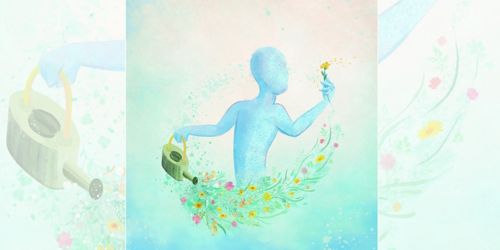St. Jude Family of Websites
Explore our cutting edge research, world-class patient care, career opportunities and more.
St. Jude Children's Research Hospital Home

- Fundraising
St. Jude Family of Websites
Explore our cutting edge research, world-class patient care, career opportunities and more.
St. Jude Children's Research Hospital Home

- Fundraising
Working with parents to better understand how hope and realism coexist

Hope and realism are two different states of mind that can exist at the same time for parents of children with cancer.
Can parents of children with serious illnesses hold onto hope and an accurate understanding of prognosis at the same time? Historically, hope and realism have been treated as two different mental states that parents inhabit, but never at the same time. By bringing bereaved parents together with interdisciplinary pediatric palliative care clinicians, we have begun to think about hope and realism in a different way.
In pediatrics, there is a tension between sustaining hope and expressing an understanding of prognosis. Yet, parents describe a balance between hope and acceptance that allows the two to coexist. Health care professionals can misinterpret sustained hope as a refusal to accept reality. This can result in friction between medical staff and patients and families. Yet most parents remain hopeful of a cure regardless of the severity of the prognosis. This hope is sustained, even among parents who acknowledge that their child is unlikely to survive.
A new framework
The Quality of Life Steering Council at St. Jude comprises bereaved parents, a grief and bereavement psychologist, pediatric palliative care clinicians, social workers, child life specialists and spiritual care providers. Following discussions about hope and realism, the council developed a new conceptual model that recognizes both emotional states to exist simultaneously.
Parents offer different definitions for hope including hope for a cure, hope for life beyond illness or return to normalcy as well as hope for comfort or mitigation of suffering. For parents who are part of the council, hope was perceived as an active endeavor, as a survival mechanism, as validation of being good parents, as an evolving process, as the persistent belief in a miracle, and as a sustainable belief at death and beyond. These different ways of defining and experiencing hope reflect the dynamic and varied ways that hope exists for parents of seriously ill children.
While discussing a new model of hope that allows it to coexist with realism, parents explained that hope is essential and intrinsic to the anticipation of grief. Whether their wish was a cure, a return to normalcy, or the mitigation of suffering, parents all emphasized that hope was indispensable, not in spite of their realism but rather because they understood what lay ahead.
In reconceptualizing hope, the council recommended viewing hope as life-affirming rather than death-denying.
Parents on the council offered four ways to help change the conversation around hope:
- Nurture and normalize hope as an essential aspect of coping,
- Partner with patients and families who maintain hope as they navigate the difficult anticipatory grief journey,
- Anticipate and acknowledge the tensions inherent to fulfilling a “good parent” role within this difficult process,
- Share information about the coexistence of hope and realism to mitigate clinician distress due to fears about fostering denial or false hope.
As clinicians begin to recognize hope as coexisting with realism, the relationship between medical staff and parents can be strengthened. Enhancement of therapeutic alliance and trust, in turn, can help promote goal-directed care for patients and families. Moving forward, we hope to raise awareness of this new framework to explain the simultaneous existence of hope and realism to help clinicians better partner with patients and families across the advancing illness journey.
Our work on this topic: Bereaved parents, hope, and realism was published in March 2020 in Pediatrics.






